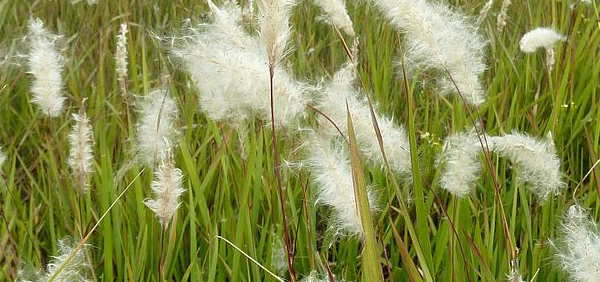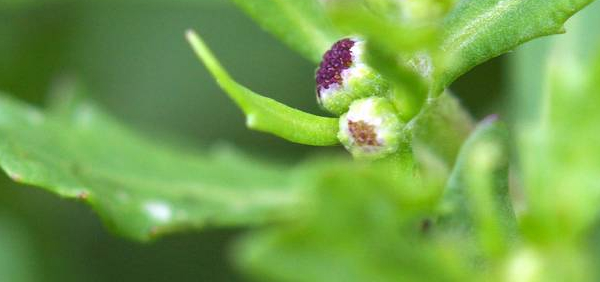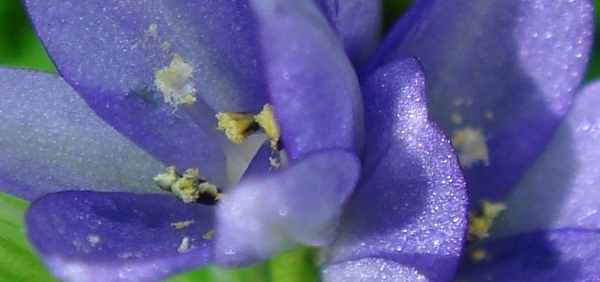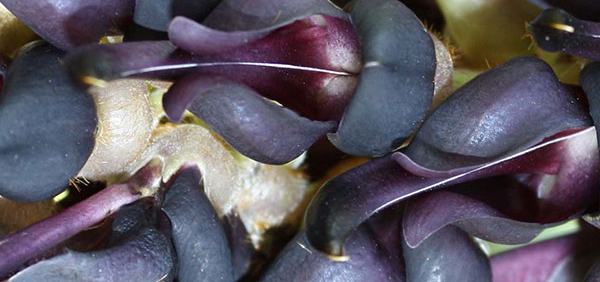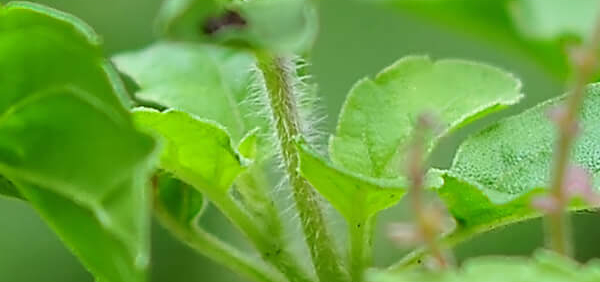trivrit :

Morphology:
Stem:
Operculina turpethum flowers, with structure of stem.
This twisted structure of stems gives it the name Trivrt.
Form: Prostrate or scrambling vine
Growth Rate: Fast
Character: Twining much twisted together and tough
Stem Structure: Simple, triangular or rectangular with hairy stem
Size: Moderate Sized
Colour: Green, and though brown when old
Spread: 10 To 20 Feet
Thorn Presence: No Thorns
Other properties: pubescent, sulcate or angular, winged with about 3-5 wings , glabrous or a little downy
Foliage:
Leaf Arrangement: Alternate
Leaf Type: Simple
Leaf Size: 5-10 cm by 1.3-7 cm
Leaflets Number: 6-7 Pairs
Leaflet Margin: Dentate to shallowly lobed
Leaflet Shape: Variable heart shape
Leaflet Apex: Acute
Leaflet Base: Cordate or hastate
Leaf Venation: Reticulately veined
Leaf Color: Green
Surface characters: Hairy
Pubescence: More or less pubescent on both sides especially when young minute
Peduncles: Peduncles stout, to 30 cm long, with compact cymes of up to 7
Petioles: Long hirsute petioles
Flower:
Operculina turpethum with showy corolla.
Inflorescence: One, or few in Cymes; axillary clusters of 1-3 on stalk to 10cm
Flower Color: White, with a tinge of cream colour
Peduncles: Aillary, 1-4 flowered,10cm long, Stout
Bracts: 2, Large, lanceolate, conspicuous, orbicular to oval, membranous, concave, pubescent, somewhat persistent, 2.5-4 cm long, often pinkish, soon shed
Flower Characteristics: Funnel shaped; Very Showy
Flowering: Flowers in June
Sepals: 5, glossy, tinged pink, to 3cm long orbicular, obtuse, mucronulate, accrescent, outer sepals the largest, pubescent, ovate-roundish, but in fruits it becomes much enlarged
Corolla: white, campanulate or broadly funnel-form, spreading to about 5cm; and .5 cm long
Stamens: strongly included,
Anthers: anthers tightly coiled, pollen not spinulose
Capsule: globose, dull black 4-sided, 4-celled, 13.8mm diam, enclosed in the enlarged brittle, very imbricate sepals, glabrous or faintly pubescent.
Fruit:
Trivrt fruits bracketed by papery sepals.
Fruit Type: Glabrous, Indehiscent
Fruit: translucent capsule with 2-4 cells
Fruit epicarp: Crcumscissile
Lid: caducous, leaving a transparent window in endocarp showing locules with seed
Fruit shape: Round
Fruit Size: 4cm long
Fruit (Unripe) Color: Pink
Fruit (Ripened) Color: Dull Black
Seed: 4, glabrous, round, 1 in each cell
Seeds length: 6 mm.
Seed colour: Black
Seed surface: Smoot
Fruit Maturity: Fruit maturity occurs by November
Fruit Covering: Bracketed by papery sepals
Fruit Characteristics: Does Not Attract Wildlife.
Propagation: via seeds
Fruit with transparent covering and endocarp, with visible seeds.
Root:
Form: Fibrous
Growth Rate: Fast
Character: Long, slender, fleshy and much branched
Root Structure: Woody with easily removable bark
Size: Long
Colour: reddish black
Spread: 10 To 20 Feet
Other properties: when fresh contain a milky juice which quickly hardens into a resinous substance, altogether soluble in spirits of wine
Character of milk: The milk has a taste at first sweetish, afterwards slightly acid;
Histology:
In residue left after exhaustion with water the following structures are usually found – a few fragments of the outer epidermis of the capsule, epidermal cells, small 5/6 sided with a little bit thickened walls, stomata few large or ranunculaceous type, fragments of Operculina leaf, upper epidermis of thin walled polygonal cells. Stomata very few, lower epidermis of cells with slightly wavy walls, stomata numerous, large of ranculous type, fragments of mesophyl and vascular bundles.
The epidermis consists of tabular brown cells. The parenchyma is starchy, scattered very large cells of resin, numerous rosette-like raphids. The very large vascular bundles are composed of large dotted vessels surrounded by woody fibers each of the prominent external ridge of bark contains one of the bundles.
The central cane like woody column of the root or stem when present is seen to be divided into 4 parts 4 bands of parenchyma (medullary rays). It consists of large dotted vessels connected together by narrow portions of woody fiber. The black Nishot has exactly same structure as that of white Nishot.
- » Classification and names of trivrit
- » Synonyms and definitions of trivrit
- » Drug Properties of trivrit
- » Chemical Constituents of trivrit
- » Standardization of trivrit
- » Parts used and Dosage of trivrit
- » Morphology and Histology of trivrit
- » Distribution and Conservation of trivrit
- » Cultivation of trivrit
- » trivrit in the market
- » Medicinal Uses of trivrit
- » Researches and clinical trails of trivrit
- » trivrit in other sytems of medicine
- » Ayurvedic formulations with trivrit
- » Images of trivrit



